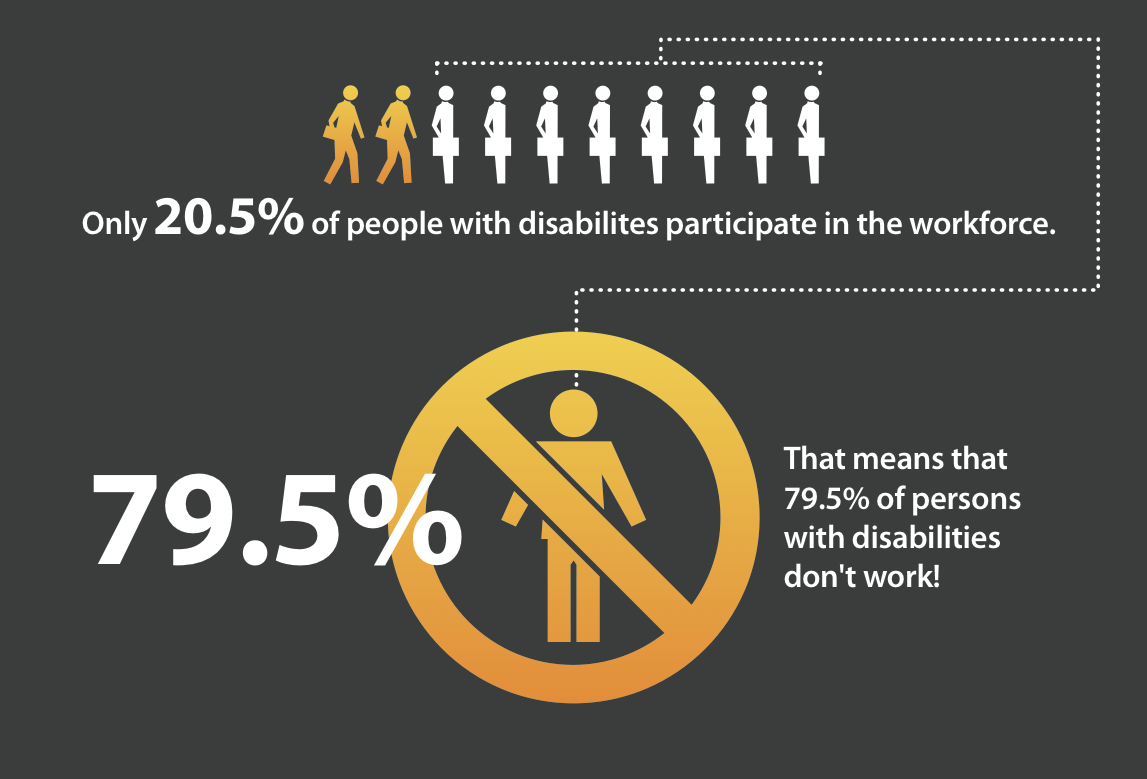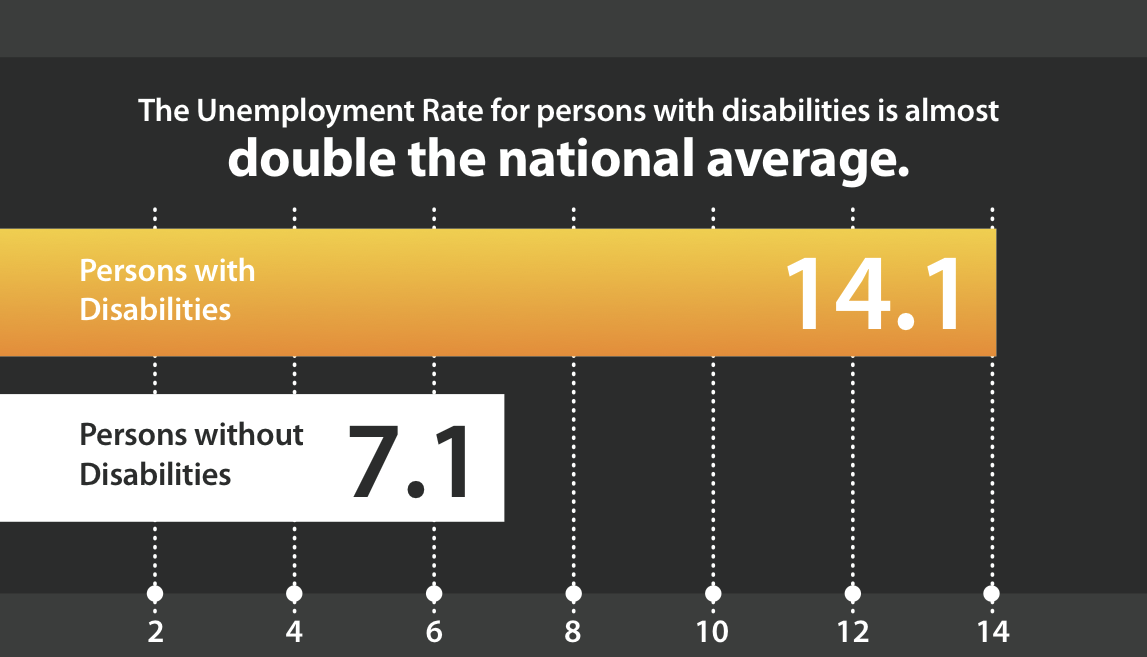
Labor Stats for Persons with Disabilities
The U. S. Department of Labor recently released data on two important employment trends for persons with disabilities. Both of these statistics are troubling and to truly put this into terms that will help you understand, we wanted to take a visual approach. You can download the complete infographic by clicking here.
The first trend is the employment percentage of individuals with disabilities. Only 20.5% of people with disabilities currently participate in the workforce. That means that the vast majority of these individuals do not work, 79.5% to be exact. That comes down to only two out of ten persons with disabilities participate in the workforce. Let’s take a peek at what exactly this looks like.

The second trend is the unemployment rate for persons with disabilities. The current rate is 14.1%, which is nearly double the national average for all workers (7.1%). Again, that means that for every person without disabilities that is unemployed – TWO persons with disabilities are unemployed. What are you doing to try and decrease this?
These two employment trends dramatically call out the importance of changing how we help to prepare individuals with disabilities for the workplace. Even with the current federal emphasis of requiring all high school special education programs to help their students create realistic post-secondary goals and a course of study to assist in reaching those goals, it is not working. On the surface, this effort is looking like it directly addresses the employment issues of people with disabilities, but it falls far short. And unfortunately, the current trend is to relax these critical student outcomes, while the system evaluates the next step on this important issue.
It all comes down to this
The critical years in the career development of all students, not just special education students, are the middle and high school years. The process should start with career exploration, leading to helping each student create a career plan. Without a plan, the student has no way of connecting education to career goals.
One fact is certain—without a goal, there is no motivation. In fact, without a goal, there is no need to commit to anything and, as a result, motivation and time management are non-existent.
Do you want to learn more about how to address these employment issues? Click here to learn about our Conover Online system and how we can help.

